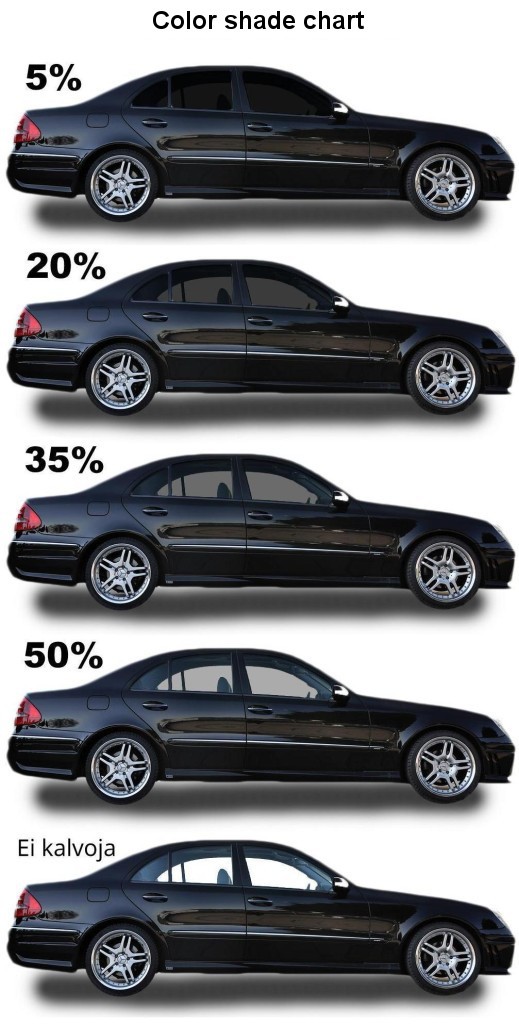Just How Car Window Tinting Can Boost the Resale Worth of Your Vehicle
Just How Car Window Tinting Can Boost the Resale Worth of Your Vehicle
Blog Article
Home Window Tinting Regulations and Guidelines: What You Need to Know Before Tinting Your Vehicle
Before waging home window tinting for your lorry, it is important to acquaint on your own with the varied regulations and standards that govern this method throughout various states. These policies dictate the allowable levels of tint darkness, usually determined by visible light transmission (VLT) percentages, and consist of particular specifications for front windshields intended at ensuring road safety. In addition, particular territories might supply clinical exceptions for people with certifying conditions. Recognizing these intricacies can save you from possible lawful implications, but what are the specific guidelines in your state?
Overview of Window Tinting Rules
Window tinting regulations are often subject to variation across different jurisdictions, showing regional regulations and security factors to consider. These regulations determine the allowable degrees of color darkness and reflectiveness on lorry windows, guaranteeing that vehicle drivers preserve ample presence while also shielding against harmful UV rays and warmth.
Most regulations categorize home window tinting based upon the Visible Light Transmission (VLT) percent, which suggests the quantity of light that can go through the home window. Normally, lower VLT percentages represent darker colors. Legislations commonly separate between the front, side, and rear home windows, with more stringent limitations put on the front windscreen to enhance safety for both the chauffeur and other roadway users.
Additionally, some territories enforce restrictions on the reflectivity of the tint, protecting against excessive glow that might harm visibility. Exceptions to these laws might exist for individuals with specific medical problems needing added sun protection. Compliance with home window tinting regulations is vital, as violations can lead to penalties, necessary removal of the tint, and potential boosts in insurance policy costs. For that reason, it is crucial for car owners to familiarize themselves with local regulations before waging window tinting installations.
State-by-State Color Laws
Recognizing the certain window tinting laws in each state is essential for lorry proprietors looking for to adhere to the law. Each state in the united state has actually established its own collection of rules controling window tinting, which can vary significantly. These laws usually determine the permitted degrees of tint darkness, the kinds of home windows that can be tinted, and any clinical exceptions that may apply.
For instance, states like California have stringent limitations on tint darkness for front windows, while others, such as New Mexico, might permit darker colors. Furthermore, certain states mandate specific visibility percents for various home windows, including the windshield, front side windows, and back home windows. It is important for auto proprietors to familiarize themselves with their state's regulations to stay clear of possible fines or penalties.
Moreover, some states might require a qualification sticker to be put on tinted home windows, suggesting conformity with state legislations. Failure to follow these guidelines not only runs the risk of legal repercussions yet can additionally impact security and presence while driving. Lorry owners ought to perform extensive study or speak with local authorities to guarantee complete understanding and conformity with state-by-state color guidelines.
Allowed Tint Degrees and Types
Lots of car proprietors may be surprised to find out that enabled color degrees and kinds vary commonly across different states. Each state has established its very own laws concerning the acceptable darkness and reflectivity of window color, typically measured by Visible Light Transmission (VLT) percents. VLT describes the quantity of light that can travel through the colored windows; thus, a lower portion suggests a darker color.

Moreover, the kinds of tint materials allowed can differ, with some states forbiding metal or mirror-like coatings. It is crucial for car owners to familiarize themselves with their state's particular regulations to guarantee conformity. Non-compliance can cause penalties, mandatory removal of the tint, or other legal consequences, making it crucial to comprehend these guidelines prior to waging installation.
Medical Exceptions for Tinting
While not all states offer allocations for medical exceptions relating to home window tinting, those that do recognize the necessity for specific people to enhance presence and comfort due to medical conditions. Different medical problems, such as lupus, skin cancer, and specific eye disorders, can render individuals especially delicate to sunshine. As a result, these people might require darker colors to safeguard themselves from harmful UV rays and glare.

It is very important to keep in mind that even with a clinical exemption, there may still be limitations on the level of color allowed. Conformity with state laws guarantees that individuals are both secured and within legal limits. Those considering clinical exceptions must call their local Division of Motor Vehicles or comparable authority to comprehend the procedures and requirements essential to get an exemption successfully.
Fines for Non-Compliance
Failing to adhere to window tinting legislations can lead to considerable fines, which vary by state. Police are empowered to provide citations for vehicles that do not comply with the defined tinting policies. These penalties typically include fines, which can vary from small amounts to a number of hundred bucks, depending on the severity of the violation and the state concerned.
In some jurisdictions, repeated offenses may cause escalating fines or extra fines, such as obligatory court looks. Additionally, non-compliance might demand the elimination of illegal tinting, commonly at the proprietor's cost. In severe instances, habitual wrongdoers might encounter suspension of their vehicle enrollment until conformity is accomplished.
Furthermore, insurance coverage effects might develop from obtaining numerous citations for window tint offenses. Insurers may view such infractions as a sign of riskier actions, possibly leading to increased premiums or problem in insurance coverage.
To stay clear of these fines, it is essential for car owners to familiarize themselves with their neighborhood home window tinting laws and make certain that their vehicle complies (Window Tinting). This aggressive method not only prevents lawful ramifications but additionally advertises road security
Final Thought

The majority of guidelines identify window tinting based on the Visible Light Transmission (VLT) percent, which suggests the quantity of light that can pass through the window. Conformity with home window tinting regulations is essential, as infractions can result in penalties, compulsory elimination of the color, and potential increases in insurance costs.Recognizing the specific window tinting laws in each state is important for lorry proprietors seeking to conform with the law. These policies frequently dictate the allowed degrees of color darkness, the kinds of windows that can be tinted, and any clinical exemptions that may apply.
For circumstances, states like The golden state have stringent restrictions on color darkness for front windows, while others, such as New Mexico, might permit darker tints.
Report this page